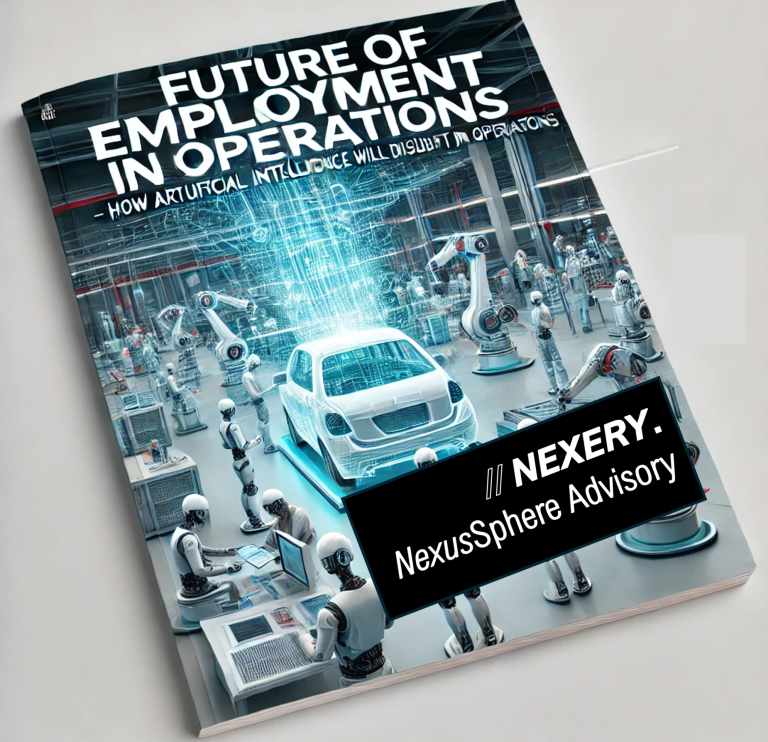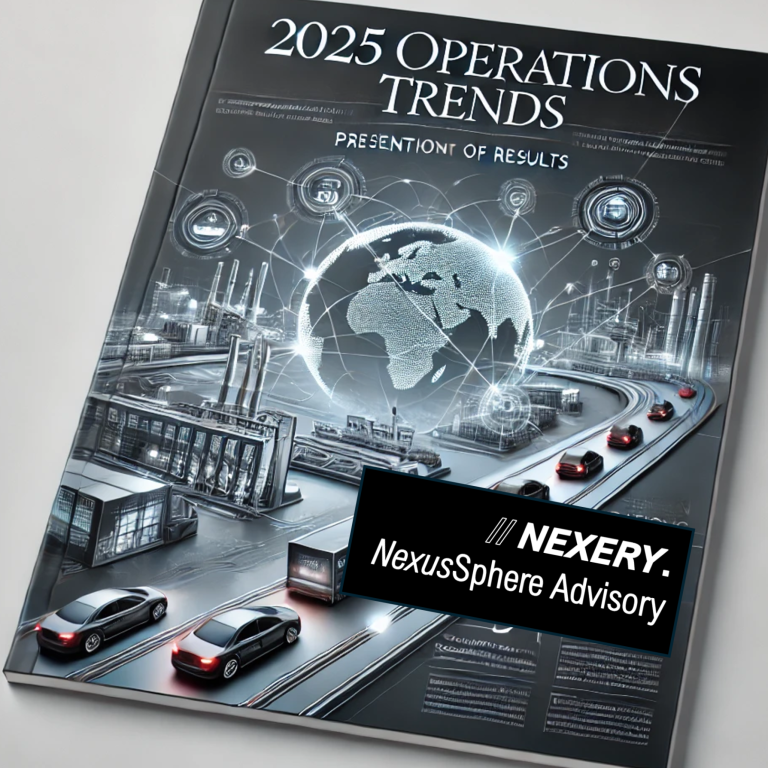// Studies & Puplications.
In addition to the exclusive studies for our customers, we regularly publish studies and point of view on trends and challenges for manufacturing companies in all in industries.
// 2025 HUMANOID ROBOT STUDY.

Market Development, Technological Maturity And Potential For Companies.
The present study analyzes the rapid development of humanoid robots, their technological maturity and their growing importance for companies.
It provides decision-makers with in-depth insights into market development and shows how humanoid robotics can unlock new potential for innovation and competitiveness.
Our goal is to create a basis for strategic decisions in a dynamic and forward-looking field of technology.

// FUTURE OF EMPLOYMENT IN OPERATIONS.
How Artificial Intelligence Will Disrupt Jobs in Operations.
We investigate the extent to which jobs in the non-value-added areas of manufacturing companies can be automated using generative artificial intelligence. Accordingly, we first identify a dozen detailed occupations and their tasks, the so-called archetypes, in the manufacturing sector. Based on the tasks of these functions, we use an expert survey to assess the degree of task automation using generative artificial intelligence. According to our estimates, approximately 60% of the archetypes have middle to high potential for automation.

// SOFTWARE DEFINES VEHICLE STUDY.
Market Analysis and Outlook of Software-Defined Vehicle.
The automotive industry is undergoing a software-driven transformation, where vehicles are increasingly defined by software capabilities rather than traditional hardware features. The emergence of autonomous driving, connectivity, electrification, and artificial intelligence is driving major investments, with OEMs spending over 15% of their budgets on SDV development. Software-defined vehicles (SDVs) enable continuous updates, personalized user experiences, and new business models such as Car-as-a-Platform and Data-as-a-Service. Leading companies like Tesla and NIO are accelerating this shift by integrating software ecosystems, cloud computing, and advanced E/E architectures. Traditional OEMs face challenges in adapting agile software development, managing complex data, and restructuring supply chains to compete with new entrants. The transition to SDVs requires a new operating model, focusing on standardization, modularity, cybersecurity, and scalable software development. Ultimately, companies that embrace software-first strategies, optimize digital revenue streams, and integrate AI-driven functionalities will lead the next era of mobility.

// 2025 COO AGENDA.
Operations Trend Radar.
The 2025 Operations Trendradar highlights the key challenges manufacturing companies face, including supply chain disruptions, rising costs, labor shortages, and geopolitical uncertainties, making immediate action essential. Companies must focus on cost reduction, working capital optimization, AI integration, and supply chain resilience to stay competitive. The top strategic priorities for 2025 include automation, digital transformation, supplier management, and sustainability, with a growing emphasis on humanoid robots and AI-driven decision-making. To succeed, organizations must optimize processes, strengthen supplier relationships, embrace new technologies, and develop crisis management capabilities. Expected benefits include up to 7.3% cost reduction, 32% lead-time reduction, and 72% increase in automation, ensuring greater efficiency and resilience. Benchmark projects, such as operations cost benchmarking and supply chain optimization, showcase successful implementations of these strategies. Ultimately, COOs must take proactive steps to reduce risks, enhance efficiency, and embrace digitalization to thrive in an increasingly volatile market.

// FACTORY OF THE FUTURE.
Challenges and Trends to Transform Automotive Factories.
The study explores the transformation of industrial production, particularly in the automotive industry, driven by automation, robotics, and digital technologies. The factory of the future integrates AI, robotics, and flexible production systems to enhance efficiency, quality, and sustainability while adapting to changing market demands. Automation and AI optimize processes, but require careful planning to ensure seamless implementation and workforce acceptance. Robots take over repetitive tasks, allowing employees to focus on complex and strategic work, making upskilling and continuous learning essential. Flexible production lines and modular manufacturing enable quick adaptation to customer preferences and market fluctuations. Companies must take a holistic approach, integrating digitalization, automation, and employee development while fostering collaboration across departments. Ultimately, success in the factory of the future requires technological innovation, workforce transformation, and strategic adaptation to remain competitive in an evolving industrial landscape.
Wir benötigen Ihre Zustimmung zum Laden der Übersetzungen
Wir nutzen einen Drittanbieter-Service, um den Inhalt der Website zu übersetzen, der möglicherweise Daten über Ihre Aktivitäten sammelt. Bitte überprüfen Sie die Details in der Datenschutzerklärung und akzeptieren Sie den Dienst, um die Übersetzungen zu sehen.
